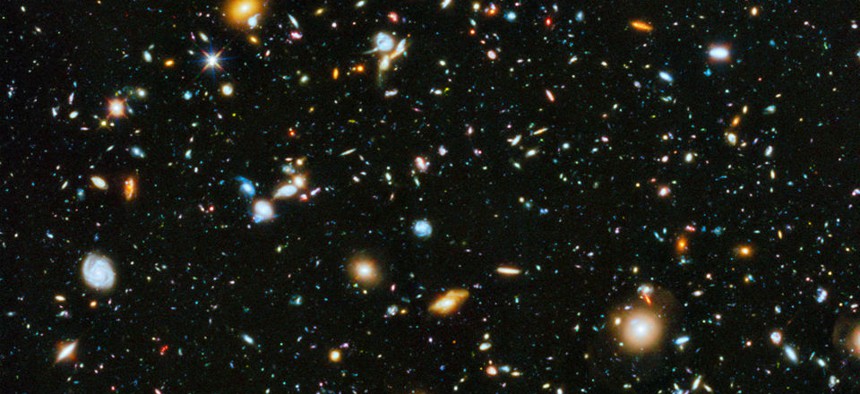NASA Reveals Unprecedented Image of Deep Space

The visible and near infrared light spectrum collected from NASA's Hubble Space Telescope over a nine-year period. NASA/AP
The image draws on nine year's worth of shots taken by the Hubble Telescope.
NASA revealed today one of the most colorful and comprehensive composite shots of deep space, a work that draws on nine year's worth of shots taken by the Hubble Telescope. According to researcher Rogier Windhorst, " It's the deepest panchromatic image of the sky ever made. It reaches the faintness of one firefly as seen from the distance of the moon."
The image shows about 10,000 galaxies that date back to within a few hundred million years of the big bang; a very, very long time ago. Scientists used ultraviolet light to show the full range of colors that can be captured by Hubble. In addition to creating a rather stunning photograph, the image reveals some key information about space.
NASA explains that earlier missions focused only on star formation in relatively near and relatively far galaxies, but didn't gather much information from the middle ground, which would provide information on how stars were made between 5 billion and 10 billion years ago. This is when most stars in the universe came into existence. But the Ultraviolet Coverage of the Hubble Ultra Deep Field study, which put the image together, is filling in that missing link:
Ultraviolet light comes from the hottest, largest and youngest stars. By observing at these wavelengths, researchers get a direct look at which galaxies are forming stars and where the stars are forming within those galaxies. Studying the ultraviolet images of galaxies in this intermediate time period enables astronomers to understand how galaxies grew in size by forming small collections of very hot stars. Because Earth's atmosphere filters most ultraviolet light, this work can only be accomplished with a space-based telescope.
Researcher Harry Teplitz explained, "the lack of information from ultraviolet light made studying galaxies in the HUDF like trying to understand the history of families without knowing about the grade-school children... The addition of the ultraviolet fills in this missing range."
The new data is especially important to have ahead of the launch of the James Webb telescope, which will eventually replace Hubble (or become its successor, as NASA prefers to think about it.)





